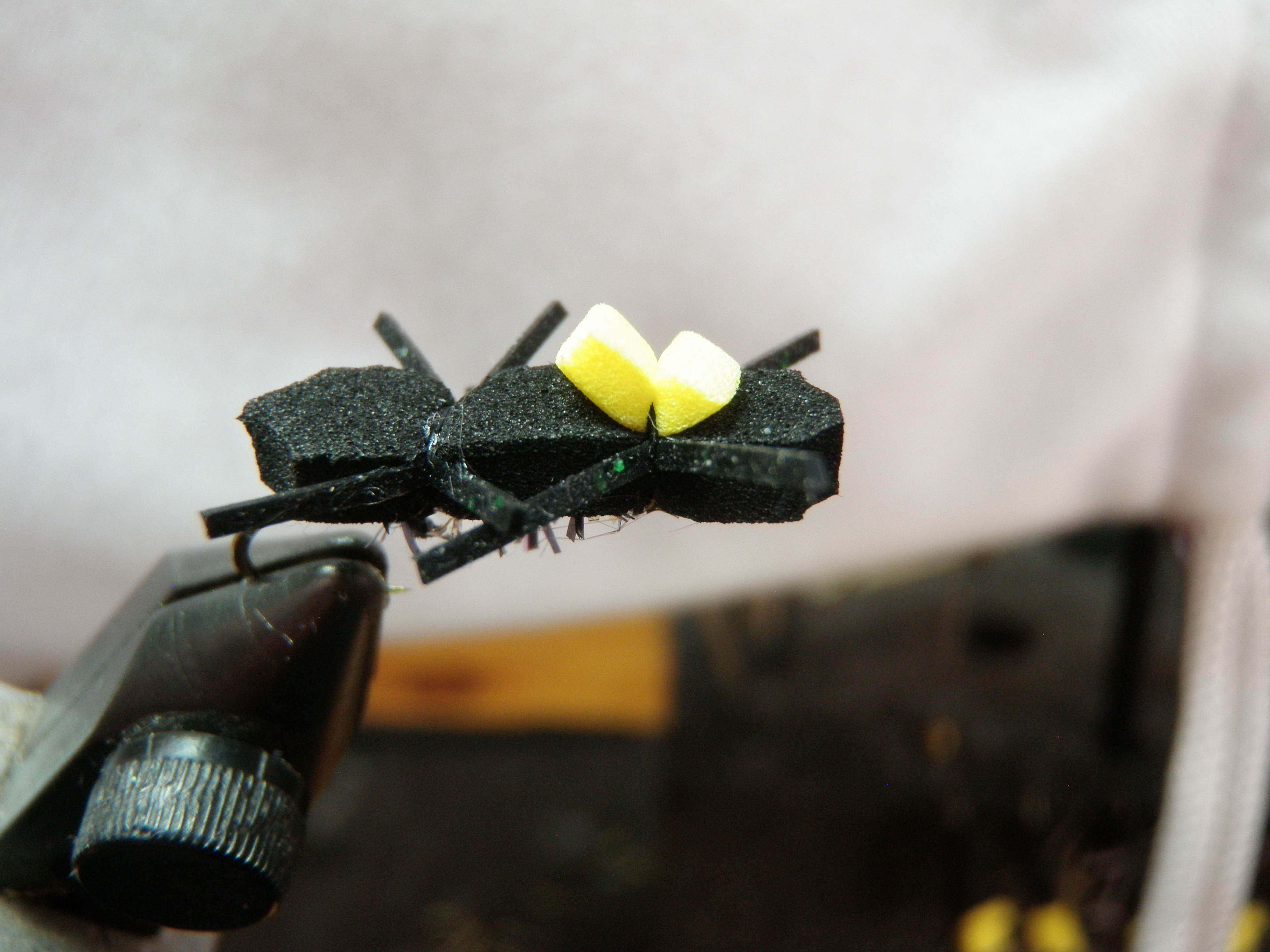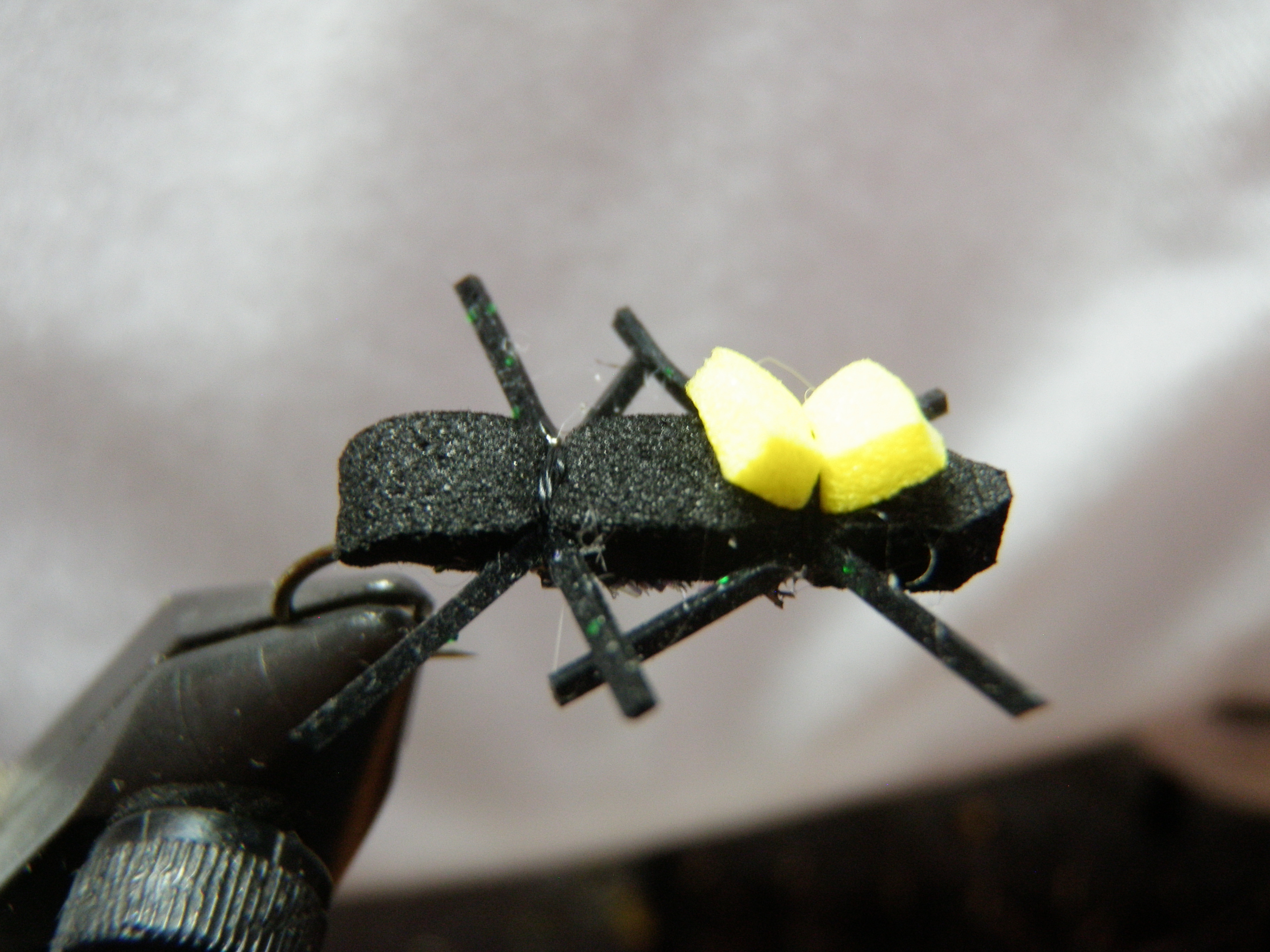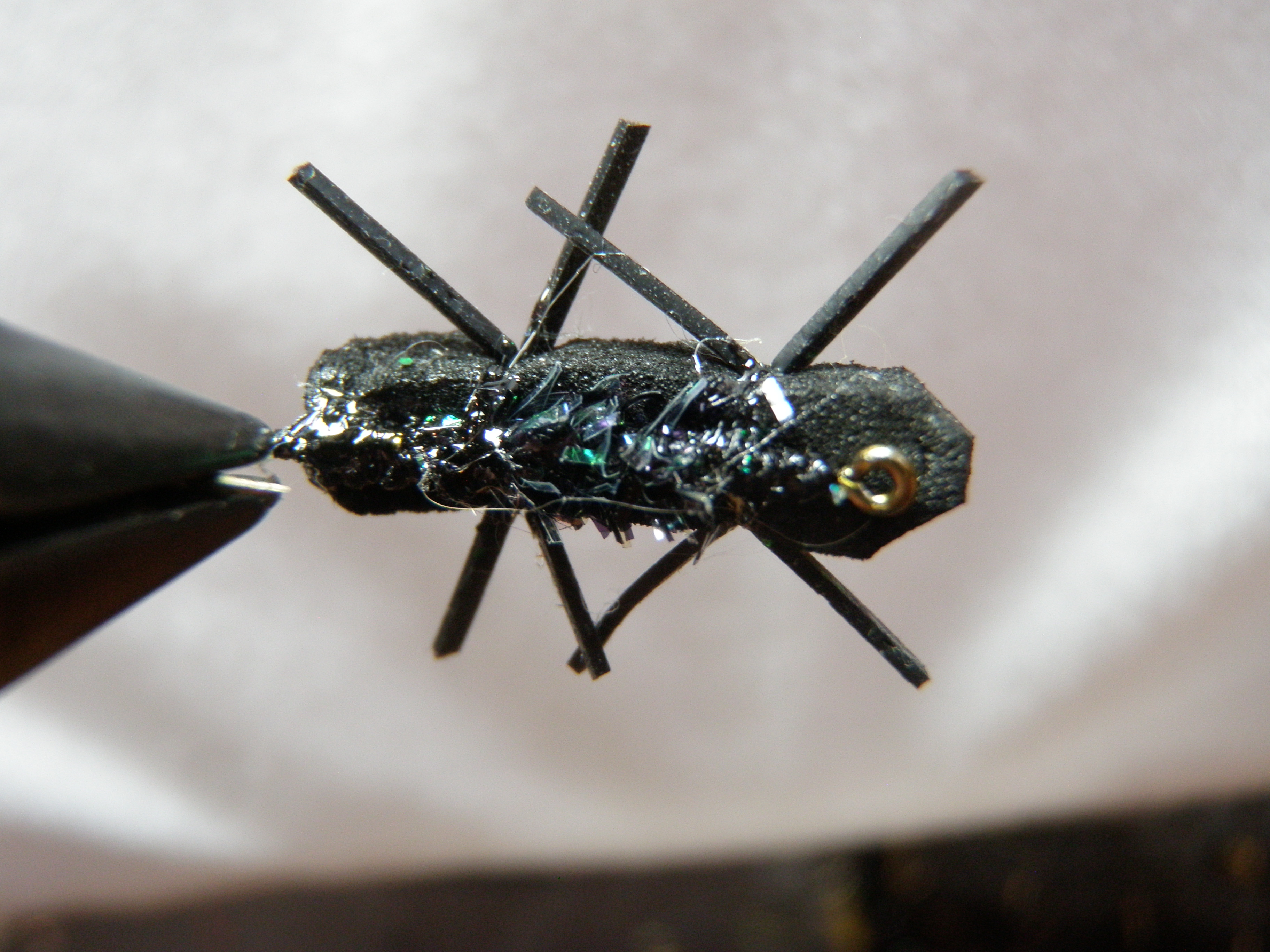Chernobyl Ant 02/13/2014 Photo Album
Prior to 2013 my workhorse flies and the first flies I would offer to fish as I began my day were a yellow Letort hopper trailing a beadhead hares ear nymph. These flies served me well; however, I became increasingly annoyed by the tendency of the yellow dubbed body of the Letort hopper to become saturated with water and sink. If the fish tuned into the surface fly I could tolerate frequently pressing the body against my shirt to absorb moisture and then a quick dunk in my dry shake canister.
I tried making alternative hoppers such as the Charlie boy hopper and the pool toy that employed a foam body and offered more buoyancy, but these flies did not catch fish at the same rate as the yellow Letort hopper. When I realized that the foam hoppers were not as effective as my trusty Letort hopper, I began to go to a Chernobyl ant more and more as my first fly of the day, and I quickly discovered that fish love Chernobyl ants. The black foam body floats much better than the Letort hopper and can easily suspend beadhead flies such as size 14 beadhead hares ear nymphs. A size 10 Chernobyl ant replaced the Letort hopper as my new number one visible attractor top fly on a dry/dropper arrangement. The beadhead hares ear remains as my number one subsurface option.
Given its status as my new number one, I decided to manufacture 15 new flies in preparation for 2014. As I began, I decided I wanted to improve the fly and eliminate the spinning problem that is endemic to my method of tying. Most Chernobyl patterns and tying instructions use two layers of foam with one on top of the hook shank and one below creating a hook sandwich. I like mine to have an iridescent body so I wind a pearl black chenille around the hook shank between the two tie down points and expose the underside of the top layer of foam. Unfortunately if the foam on top of the shank is too wide, I cannot obtain a solid tie down to the narrow hook shank. I improved the strength of the bond somewhat by wrapping dubbing over the thread at the tie down points to provide more bulk and friction for gripping. In addition I apply excess amounts of head cement to the tie downs and the head, but even with these improvements, a solid Chernobyl ant eventually spins after two or three catch and release cycles. It is very frustrating to hook an apparent decent fish only to lose it and discover that the hook twisted so that the hook point was pointing sideways instead of downward.
My friend Jeff visited last summer for some September fly fishing, and having read my rave reports about the Chernobyl ant, he decided to tie some in advance of his trip. I didn’t bias his tying with my methodology, and he invented his own unique method which included notching the foam at the tie down points. As I began to tie Chernobyl ants I planned to experiment with notching, but when I made my first prototype I discovered that the narrow V notch caused the rubber legs to flare out perpendicular to the foam as two tight parallel appendages. I didn’t like this look so I fired off a text message to my friend Jeff for advice on his methodology. In the process of exchanging text messages, Jeff mentioned that he tied the foam in at the bend and then bent it back over the top of the shank. This set off flashing lights in my brain as I guessed that a solid tie down of the foam at the hook bend would prevent the foam from spinning.
I immediately began a new fly and cut the end of my black foam strip to an arrow point and then attached it to the bend of the hook with quite a few solid wraps. I moved forward and created the dubbed bases for tie down along with the iridescent underbody with the pearl black chenille and then returned my thread to the rear tie down point. I folded the foam forward and snugged two or three strong wraps around the body creating a slight indentation. At this point I attached the rubber legs to the side of the foam as I had done previously and then moved on to the forward tie down point and added an indicator and front legs. I feel that this method of tying solves the spinning problem while maintaining the key triggering points of the original fly that has produced well for me.
A season of fishing will be the true test, and I can’t wait to get out on a stream to toss some new and improved Chernobyl ants.



